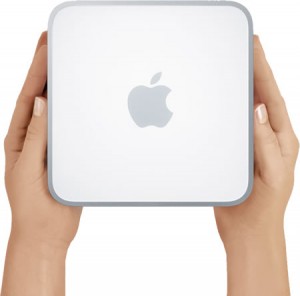 What a fun surprise in the middle of a tough year…
What a fun surprise in the middle of a tough year…
Would you believe we’re learning a bit about Mac? … yes, the computer.
A friend was nice enough to donate a fully-redundant pair of high end Mac Mini servers, with all the accessories, to upgrade our decade-old Linux-based office infrastructure. Thousands of dollars of equipment, complete with full warranty, etc. THANKS!
The donor, as well as a few other friends who have heard about this, have asked me to share my experiences as we go through this adventure.
I know Linux, I know Windows, I know lots of older systems… but I don’t really know Mac at all. So this will be a great learning experience!
Our goal: move our existing Linux-based highly tuned email server (and everything that goes with it) over to the Mac server. And do so retaining as much of the vaunted user-friendliness of the Mac as possible along the way.
Our situation is a bit more interesting than some because of our very advanced custom email filtering: our underpowered decade-old Linux box automatically handles thousands of spam attempts every hour, plus up to 20 denial of service attacks per second on a bad day. And we have to be very conservative in our spam-blocking because we work with partners all over the world (yes, even Nigeria!) How do we do it? Stick with me and I’ll tell all…
Let’s get a few techie bits out of the way.
In this series, I’ll try not to submarine too deep into tech talk; after all, many of our friends are non-tech. So if you don’t understand something in here, feel free to ask. Even so, I assume this series of blog posts is of more interest to tech-savvy folk…
What’s a Mac Mini Server? It’s a tiny all-in-one computer about the size of two bricks side-by-side. It has a bunch of connector ports, and an on-off switch. That’s it. You can’t change any of the parts inside the box (at least on our version.) Some of the parts and ports of most interest:
- Two internal 500GB hard disks. One of them comes with the Mac OS pre-installed. The other starts out blank
- 4GB of RAM, which is plenty
- One Gigabit wired network port. That’s going to hurt because we’d like to have two parallel networks here
- One firewire port. We’ll use that to connect a redundant disk drive (two 2TB drives set up to mirror in case one goes bad) as the main system drive. That way if a drive dies we can keep running, and can replace it without losing the server. We may also use this for some other interesting tricks.
- Several USB ports. We’ll eventually attach a (regular 10/100) wired ethernet cable to one of them, to act as the gateway to our DSL service.
- One mini-DVI display connector. This requires a special adapter to connect to a screen; we’ve got all that as well.
That’s it. Some things I wish it had (but as Grandma used to say, if wishes were horses, beggars would ride…)…
- Regular VGA display connector so we could use our KVM (Keyboard/Video/Mouse) switcher. Not going to happen.
- A second Gigabit wired network port. Nope.
- A second firewire port
As for the Mac operating system (OSX 10.6.4, “Snow Leopard”)… it’s actually a version of Unix, with some Apple-provided GUI “eye candy” on top. Don’t disparage the eye candy too much — it makes things simple for casual users…at least some of the time. More on that later!
Initial Setup
The first step is to get one of the servers running, with a proper basic configuration.
Getting started was mostly a smooth process. After skimming about nine inches of System Administrator books we were given, I decided I didn’t really need to learn a lot up front. So, I plugged the parts together, fired up the computer, used the built-in utility to reformat the external RAID drive (into a 500GB “system” partition and 1.5TB of “data” space), copied the system files across (yup, just drag-n-drop), and told the computer to boot from the external drive. Not bad so far. ‘Twas as easy as using Windows 🙂
Next, I wanted to arrange some form of remote access since none of us in the office want to have to go to the server closet every time we need to do something. Even more so if everyone’s at home… or visiting India!
I tried several remote-access solutions, including the popular VNC (there’s a built-in VNC system in the Mac). Unfortunately, none of them worked well. Happily, our Bomgar remote-desktop system works VERY nicely!**
Before I finish this intro story, I’ll leave you with a puzzler…
Unlike other computers, if you unplug the LCD display from the Mac, it will no longer allow remote GUI access!
Anyone know how to fix this?
Tags: Mac
I would be interested to hear if knowing Linux is an advantage when dealing with the Mac.
My background was DOS command line and then Microsoft Windows. The Mac has always been almost totally incomprehensible to me!